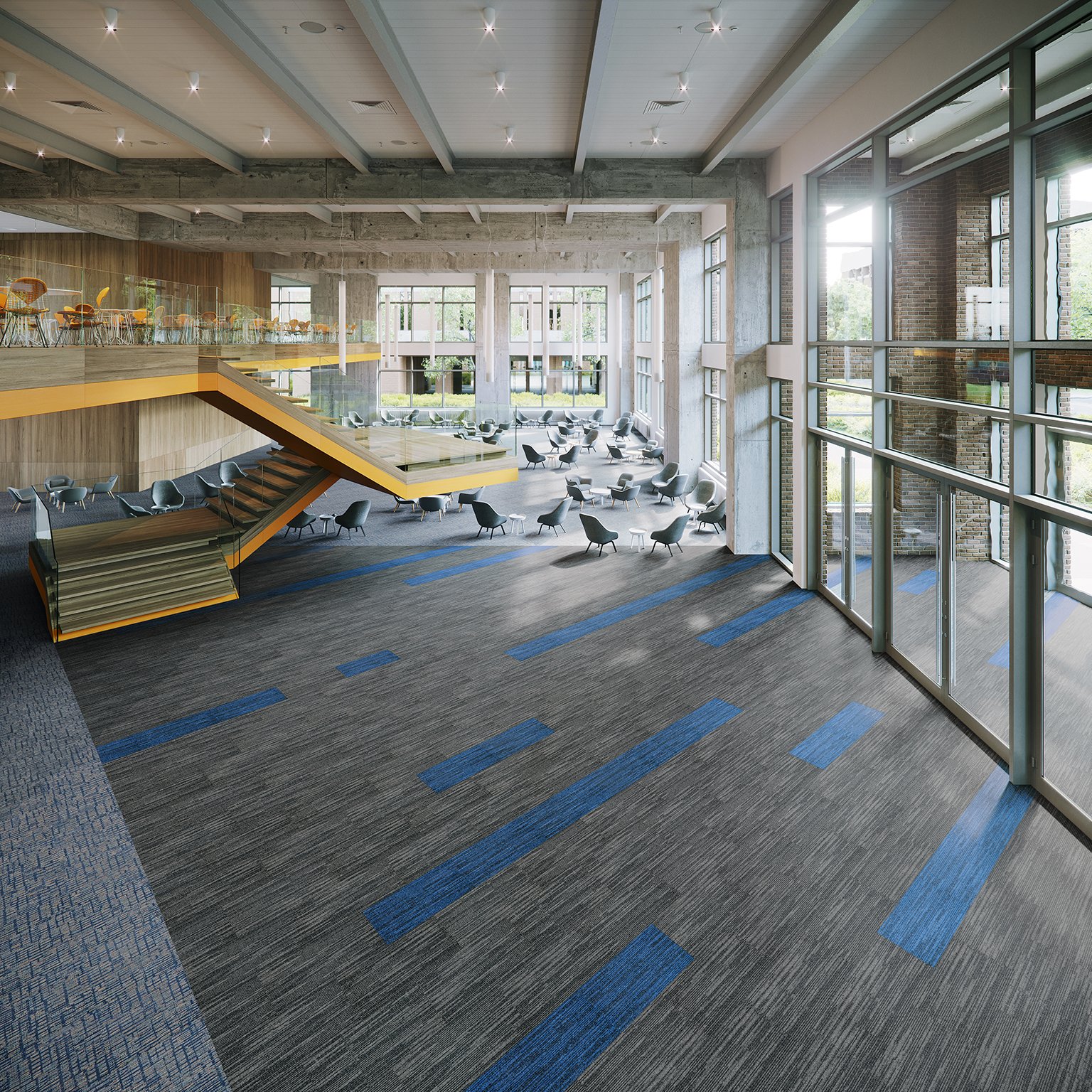If you live in a part of the world that experiences harsh winter weather and you deal with maintaining your facility flooring then you’ve probably seen that white residue that appears after a wet floor is dried up. Maybe you’ve even tried to clean that up with an auto scrub, cotton mop, or microfiber mop system.
Ultimately these things fall short of getting that residue off of the floor.
I know how frustrating it can be to keep a facility's floor clean during the winter. Starting off my career in the family business of distribution of chemicals and accessories equipment. And as our company grew, I was part of a building service contractor, helping them stripping wax floors in my younger days and cleaning, maintaining facilities.
Having grown up in the flooring industry, I've been maintaining floors or consulting with commercial facilities on their flooring for 35 years. And throughout that entire time, it's been clear that the materials used to safeguard your personnel outside can wreak havoc on your interior flooring.
Do you review your maintenance plan when the seasons change? You should, and I’ll tell you why. The materials used on sidewalks and building entries to prevent slips, trips and falls in rain and on ice outside a facility can cause issues inside as well. In this article, I’ll guide you through how to evaluate the problem and formulate viable solutions to help ensure long-term performance of the flooring.
Frixtion: Charge (Modular) - Static
Understanding Maintenance Issues
No one wants customers, clients or employees to slip and fall while walking into a building in precarious weather conditions, so facility managers use a variety of deicers to mitigate that probability. But, that means there’s residue of some sort being tracked into the facility on shoes, wheels, etc., through entryways. That presents some clear issues: how to clean the area and what type of entryway system is best suited to handle the situation.
Hard Surface Flooring Cleaners
There are myriad deicer products on the market including minerals or liquids. Products such as rock salt or calcium chloride can be tough to walk on and readily tracked into the facility. Some products have a sticky residue that’s tracked in on shoes, cart wheels, etc. Even using sand outside means it will be brought into the building.
Newer products such as magnesium chlorides are a small aggregate size and do a good job melting snow and ice but still can be tracked inside. However, there’s no residue and it is small so it’s easier to clean up.
Here’s an example of a typical situation. Calcium chloride is used to melt ice outside. It’s effective but cumbersome and the pellets get tracked into the building. Maintenance tries to auto scrub or use some sort of mop but basically just smears the residue around so it looks okay when it’s wet but when it dries there’s a white haze on the floor. What’s a better solution?
Start by understanding the chemistry necessary to break down the type of deicer being used. Calcium chloride is an oil-based product, so on hard-surface floors you should use a cleaner degreaser with a pH around 10 to break it down and remove it.
Hard Surface Flooring Cleaning Equipment
Another factor is the type of cleaning equipment. Because some of the aggregate is large, it can get lodged into a traditional pad and damage the floor so it’s important to be mindful of the full process.
AstroTurf type pads can help by helping suspend the deicer in water so the vacuum system on the auto scrubber can pick it up. Microfiber mops with plain water also can work if they are wrung out frequently or used with a double bucket system.
The custodial staff at a facility in Minnesota was frustrated by the white residue being tracked from the entrance to different areas making them look dull and dirty.
Mannington helped evaluate the cleaning protocol and suggest minor adjustments to solve the problem. Incorporating AstroTurf type pads resulted in a significant reduction in the residue, helping keep the whole area cleaner.
It worked because while the auto scrubber dispenses solution onto the floor in front of the pad, the pad rotates at approximately 175 rotations per minute, then a squeegee assembly vacuums up the solution and pulls the dirt into the recovery tank. By turning the pad and mounting it to the underside of the machine, it’s scrubbing the floor by suspending debris in the water or cleaning solution that’s immediately vacuumed up and pulled from the floor.
Effective solutions don’t have to be expensive or complicated; they just require input and ingenuity from experts.
Carpet Flooring Solutions for Winter
There are two parts to carpeted commercial spaces – the entryway and the rest of the facility. Each presents a challenge when cleaning deicing products.
Permanent entryway systems offer benefits above entry mats that are put on top of a surface. They are part of the structure so there’s no trip hazard by corners and edges rolling up or poor transition to the floor surface.
Soil and water retention in mats is limited and not as effective in containing overflow.
Any entryway should have rigid fiber to help scrape off debris from shoes, tires and such. Those products are designed and installed to withstand more dirt. But that area will have a heavy debris load which requires regular vacuuming and extraction to help prevent the soil from being tracked further into the facility. Continually removing the soil with regular maintenance ensures the fiber can continue to trap debris being tracked in.
A well-designed and installed entryway system of 10 to 14 feet into the facility plays an important role in maintaining soft surfaces in the remainder of the building under harsh weather conditions.
Lighter color carpet might not show the residue of deicing products as much as darker colors, but it’s still there and needs extra maintenance attention to help retain overall performance of the flooring. Using pile lifters and carpet extractors with plain water anywhere from 30 to 50 feet beyond the entryway removes the excess debris and helps preserve the carpet fibers.
It’s even more important if a heavy aggregate deicer product is used since that can cause long-term damage if it isn’t removed.
Creating a Winter Maintenance Protocol
Once you’ve evaluated the products being used and the composition of the entryway system, the next step is creating a manageable procedure for the necessary season.
- Examine the chemistry of the deicing products to ensure the appropriate products are being used.
- Look at the equipment and evaluate if you need to change the type of pad or the add another type of cleaning tool to your arsenal.
- Determine the best timing. As an example, a school might require cleaning immediately after students enter in the morning to ensure debris isn’t tracked from entrance areas throughout the day. An office that has entrance traffic dispersed throughout the day might only need to be cleaned at night.
The key is to be proactive instead of reactive. Research from the International Sanitary Supply Association says it costs approximately $700 to remove one pound of soil from a facility. By planning ahead and making relatively minor adjustments to cleaning and maintenance routines when weather conditions are most harsh, you can save time and money – and help preserve the performance of both hard and soft surface commercial floors for the long term.
Additional information about accessories and equipment as well as maintenance instructions, is online at Mannington Commercial Technical Service or call 800.241.2262. to speak with a Mannington professional.

.jpg?width=1080&name=Frixtion_Charge_Static_Healthcare%20(1).jpg)

